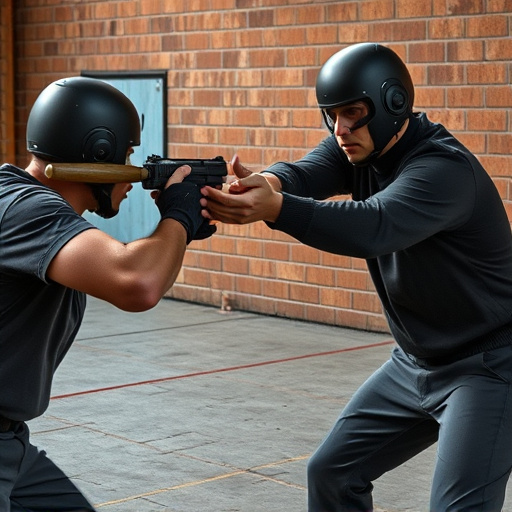Pepper spray, a close-range less-lethal tool, has a specific 2-4 meter effectiveness zone, influenced by wind, weather, and target gear. Training teaches officers aiming techniques for maximum potency within this range. Environmental conditions and distance are critical factors, guiding agencies to equip with suitable devices. Regular maintenance and training ensure optimal pepper spray range and effectiveness, enhancing tactical capabilities in diverse scenarios.
“In the realm of law enforcement, understanding pepper spray range and effectiveness is paramount for officer safety and strategic deployment. This comprehensive guide delves into the intricacies of pepper spray equipment, including its limitations, factors affecting its performance, and best practices for maintenance and training. By exploring these key aspects, we equip officers with vital knowledge to make informed decisions in dynamic situations.”
- Understanding Pepper Spray Range Limitations
- Factors Affecting Pepper Spray Effectiveness
- Best Practices for Equipment Maintenance and Training
Understanding Pepper Spray Range Limitations
Pepper spray, a common less-lethal tool used by law enforcement, has a specific range and effectiveness that officers must understand to ensure its safe and efficient use. The pepper spray range typically varies between 2 to 4 meters (6 to 13 feet), depending on the brand and model. This limited range means officers need to be in close proximity to their target, which is crucial for controlling and de-escalating situations.
The effectiveness of pepper spray lies not only in its range but also in the concentration of capsaicin, the active ingredient responsible for the burning sensation it causes. However, factors such as wind, weather conditions, and the target’s position or protective gear can significantly impact the spray’s reach and potency. Law enforcement personnel undergo training to learn how to maximize the spray’s effectiveness within its limited range, including proper aiming techniques and understanding when and where to deploy it for optimal results.
Factors Affecting Pepper Spray Effectiveness
Several factors influence pepper spray’s range and effectiveness, shaping its utility in law enforcement scenarios. One key consideration is wind direction and speed. The spray’s accuracy and reach can be significantly impacted by even light breezes, causing it to drift off target or lose potency before reaching the intended aggressor. Thus, officers must account for environmental conditions when deploying pepper spray, ensuring optimal coverage and impact.
Distance plays a crucial role as well. Pepper spray is most effective within a specific range, typically between 2-3 meters (6-10 feet), where the concentration of capsaicin is high enough to incapacitate or deter an individual. Beyond this range, the spray’s potency diminishes significantly, reducing its ability to disrupt and control volatile situations effectively. Understanding these factors allows law enforcement agencies to equip their officers with suitable pepper spray devices for various tactical requirements.
Best Practices for Equipment Maintenance and Training
Maintaining pepper spray equipment is paramount to ensure its optimal range and effectiveness during operations. Law enforcement agencies should establish a rigorous maintenance schedule, including regular cleaning, calibration, and functionality checks. These practices safeguard the integrity of the spray, ensuring it meets performance standards when needed. Additionally, ongoing training sessions for officers are crucial. Training should cover proper usage techniques, safety precautions, and de-escalation strategies to maximize the tool’s efficiency while minimizing risks to both officers and individuals in their care.
By integrating these best practices into their protocols, law enforcement can enhance their tactical capabilities. Regular equipment maintenance ensures that pepper spray remains a reliable less-lethal option, capable of neutralizing threats effectively within its designed range. Equally important is training that equips officers with the knowledge to employ this tool strategically, fostering safer and more controlled outcomes in various situations.
Pepper spray is a powerful tool in law enforcement, but its effectiveness depends on understanding range limitations and various affecting factors. Regular equipment maintenance, comprehensive training, and adherence to best practices are essential to ensure optimal performance when it matters most. By optimizing these areas, law enforcement agencies can maximize the impact of their pepper spray gear, enhancing safety and control during critical situations.
